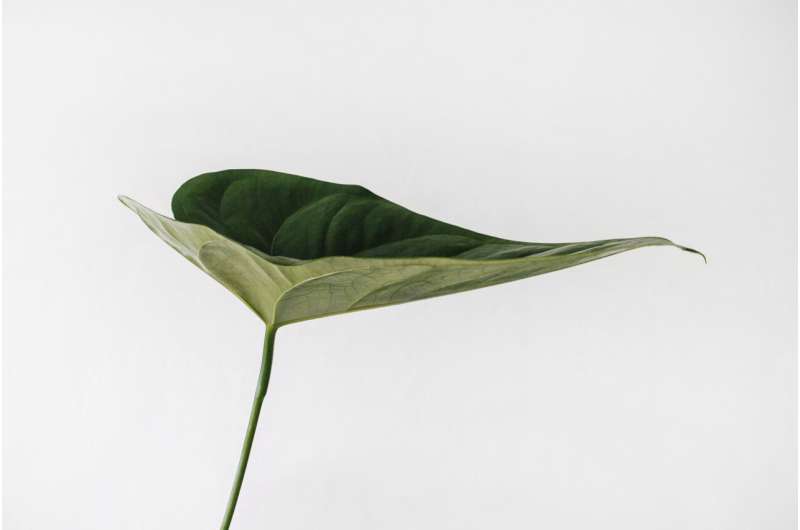A leaf shown with the driptip on the right. Credit: Unsplash/CC0 Public Domain
Driptips, the acuminate tips of leaves, are a typical feature of leaves in tropical rainforests. As plant canopies intercept precipitation, raindrops converge on the leaves and flow off the leaves at the tips. Determining the driptip size is important because it provides critical information for predicting soil erosion in forested areas.
In a study published in Ecohydrology, researchers from the Xishuangbanna Tropical Botanical Garden (XTBG) of the Chinese Academy of Sciences and their collaborators have investigated the rainfall interception mechanisms of the canopy and the underlying reduction in kinetic energy. They also tried to identify the most advantageous intercropping species that can reduce the kinetic energy of throughfall.
The researchers measured the driptips size distribution and the morphology of water droplets on the leaves among rubber (Hevea brasiliensis) and intercropping species (Camellia sinensis, Citrus reticulata, Flemingia macrophylla, Theobroma cacao). By artificially spraying water mist onto the leaves of five plant species with different leaf features, they conducted driptip-generation experiments.
They found that the driptips of tall macrophanerophytes were significantly smaller than those of low shrubs and that, in particular, the width of leaves at three mm from the tip of the rubber tree leaves had a very significant positive correlation with the size of the driptips.
In addition, the water droplet height had a strong linear correlation with the total volume of the droplet in all five foliage species. At the same time, the contact angle of the water droplets and the total volume of the droplet were significantly negatively correlated.
Furthermore, they calculated the maximum theoretical kinetic energy and the practical kinetic energy of the driptips. Tea and cocoa were better intercropping plants than the other tested species.
"It is important to consider the kinetic energy of driptips in selection of intercropping species when constructing rubber-based agroforestry plantations," said LIU Wenjie of XTBG.
More information: Jiaqing Liu et al, The detected effects of driptips and leaf wettability on the kinetic energy of throughfall in rubber‐based agroforestry in Xishuangbanna, Ecohydrology (2022). DOI: 10.1002/eco.2492
Provided by Chinese Academy of Sciences
























